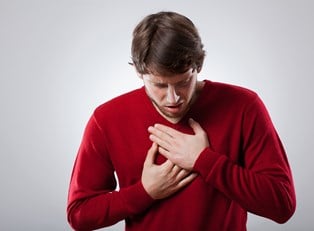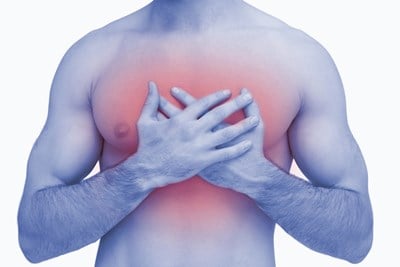Chest pain can occur suddenly at any time and without warning. One may try to ignore it at first, but chest pain can be scary and worrisome. Most people don't know what a heart attack feels like or if they should go to the emergency room. Chest pain is one of the most common reasons people call for emergency medical help. Every year, ER (emergency room) doctors evaluate and treat millions of people for chest pain. Fortunately, chest pain doesn't always signal a heart attack. Most often, chest pain is unrelated to the heart. But even if the chest pain has nothing to do with the cardiovascular system, what is causing it may still be important and worth the time seeking medical help for evaluation. A wide range of health problems can cause chest painchest pains while coughing, sneezing, laughing, or breathing deeply.
Chest Pain Symptoms
A wide range of health problems can cause chest pain. In general, a chest pain related to a heart attack or other heart problem is associated with one or more of these symptoms: pressure, fullness or tightness in the chest; crushing or searing pain that radiates to the back, neck, jaw, shoulders and arms, especially the left arm; pain that lasts more than a few minutes, goes away and comes back or varies in intensity; shortness of breath, sweating, dizziness or nausea. Non-heart-related chest pain symptoms may include a burning sensation behind the breastbone (sternum), a sour taste or a sensation of food re-entering the mouth, trouble swallowing, pain that gets better or worse when changing posture, pain that intensifies when breathing deeply or coughing or a tenderness when pushing on the chest. If one is experiencing a new or unexplained chest pain, or suspects he or she is having a heart attack, emergency medical help is necessary. Self-diagnosing heart attack symptoms is a waste of time. Every minute is crucial if a heart attack is taking place, and a quick trip to the ER can save lives. Chest pain that comes on or worsens with exercise, stress, or eating a large meal and goes away with rest may be a warning symptom of heart disease.
Chest Pain Treatment
Chest pain home treatment is not appropriate if the pain occurs with heart attack symptoms. Most people who have been diagnosed with angina have a pattern to their attacks that they recognize. Those individuals should follow the treatment plan outlined with their doctor. Habits and changes in lifestyle that may reduce chest pain include avoiding strenuous activities, eating balanced and nutritious meals low in fats, maintaining a healthy weight, limiting alcohol consumption, quitting smoking, reducing stress, controlling blood pressure, avoiding extreme temperatures, and following an appropriate exercise program. When seeking medical evaluation, the typical approach to chest pain involves ruling out the most dangerous causes: heart attack, pulmonary embolism, thoracic aortic dissection, esophageal rupture, tension pneumothorax and cardiac tamponade. By elimination or confirmation of the most serious causes, a diagnosis of the cause may be made, and often no definite cause will be found. A rapid diagnosis can save lives and often must be made without the help of X-rays or labs (blood tests). A focus on recent health changes, family history, tobacco smoking, diabetes and other risk factors is useful. Once the chest pain cause is identified, any number of wide-ranging treatments may be prescribed.



